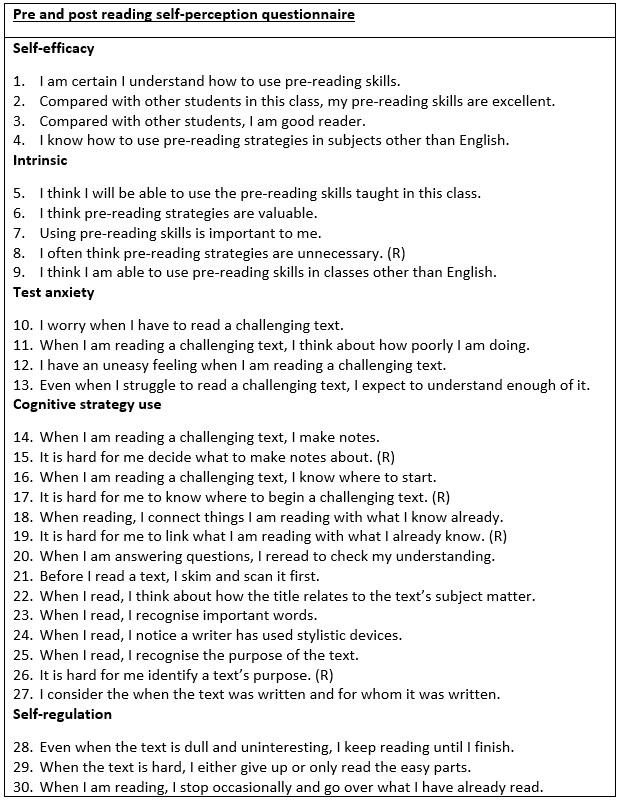What do you do with the mountain of data that you collect at your school? For the past two years, our library services team at Anglican Church Grammar School (better known as Churchie), have captured data from our Reading Resilience Program, which sees students tested each fortnight during a scheduled reading lesson.
The tests – initially implemented to address reading deficiencies identified from evaluation of our NAPLAN data – assess students' literal, interpretative and applied comprehension skills via 10 multi-choice questions.
After a period of fine-tuning to optimise the test instruments' reliability and validity, we began to recognise patterns in the students' responses. As a result, broader questions emerged: What are we going to do with all of this data? And what are we going to do about supporting and improving our students' reading comprehension now that we have reliable insights?
Essentially, our action research team wanted to understand whether students perceive the benefits to their reading performance of a taught reading strategy and whether their perceptions correlate with fortnightly test scores pre and post the intervention.
What we did
To begin with, our methodology included a literature review of a number of journal articles, most significantly Reading Between the Lines: What the ACT Reveals About College Readiness in Reading (2006). This article found that the young adults who were the most ‘college ready' were those who engage with challenging texts during high school and, more specifically, were supported in this engagement through a variety of taught reading strategies. When translated into our school context, it means having students read challenging texts across all their subjects and providing them with strategies that facilitate their comprehension.
So, how do we get our students reading and comprehending challenging texts? We selected reading strategies promoted by the Queensland Curriculum and Assessment Authority (QCAA)'s Beyond NAPLAN Reading Challenging Texts workshops. This teaches readers to both ‘fly over the text' and ‘hunt through the text'. These strategies were first taught to our students and then deployed in their fortnightly Reading Resilience Tests.
Prior to this instruction, to establish a baseline understanding of our students' perceptions of their own reading competence, the research team surveyed nine classes of Year 10 students. The recognised Motivational Strategies for Learning Questionnaire, a Likert scale tool, was used (see Figure 1). After this, students were taught the reading strategy. Then, over the next six weeks, they completed two of their regular Reading Resilience Tests. In the first week, the strategy was taught via direct instruction but not tested. Two weeks later, the strategy was taught via teacher guided instruction and then students independently applied it to a Reading Resilience Test. In the third fortnight, students employed reading strategies independent of teacher intervention.
Collections of students' annotations on the reading material, and exit feedback provided qualitative evidence to correlate and further explain our understanding of the survey and test results. The final stage before analysis of the data was the post-intervention survey.

Figure 1. Questionnaire delivered pre- and post-intervention.
What we found
During the instruction and research period, students' Reading Resilience Test results improved; however, the post-intervention survey indicated that students themselves did not perceive an impact resulting from the reading strategy they were taught. In fact, when compared to their pre-intervention Reading Resilience Test results, 53 per cent of students improved their score by one or more correct answers, 20 per cent achieved no change, and 26 per cent decreased by one or more.
The survey responses suggest that students are aware of a suite of reading strategies (such as notetaking, re-reading and language analysis), they feel confident using these strategies, they value them and they reported limited anxiety when faced with a challenging text. Curiously, these outcomes were the same regardless of students' abilities and test scores. That is, students who performed poorly in Reading Resilience Tests reported the same level of competence and confidence as those who scored perfect results.
It was also interesting to note that when guided instruction ceased and scaffolding was removed, students applied reading strategies idiosyncratically. Indeed, during the instructional phase students were taught a rigorous method of text annotation to deepen their comprehension of challenging texts. However, when left to their own devices, our Year 10 students reverted to pre-instruction strategies. The most common of these were to highlight whole sentences and underline single words and phrases.
What we learned
What began as research into the impact of a taught reading strategy revealed a paradox. Regardless of how successful the reading strategy intervention might have been, students attributed no greater value to the strategy, nor did they change their perceptions of their reading aptitudes.
However, when viewed in the light of a subsequent literature review, our findings are not surprising. In particular, they correlate with Dembo and Seli's (2004) study concluding that students' resistance to changing their academic behaviours is linked to automaticity of behaviour and levels of self-efficacy being too high or too low. In our context, students reverted to habits and practices learnt via trial and error during lower secondary years.
As a result, a new question emerged. If our Year 10 students' reading practices are frozen, would we achieve more success with a younger cohort? A second study building on our new knowledge is looking into whether our students can accept, apply and retain taught reading strategies.
In preparation, we sought advice from The University of Queensland's Science for Learning Centre which helped us review and restructure our research process. As a result, we were advised to increase and repeat the explicit teaching of the strategy, using more scaffolding, and at regular intervals. In our school context, and many more, this can be summed up by the ‘I do', ‘we do', ‘you do' cycle of teaching and learning.
What this study and implementation process brought to light is that an ‘off the shelf' intervention strategy is a good place to initiate a solution to deficiencies you have identified in your data. However, over the period of testing and reflecting, new questions arise as to the efficacy of what appears to be a solution.
It is clear that a tool should be tried and shaped to suit a local context. Perhaps, older students require constant support in their reading of challenging texts via a cycle of learning activities, while younger students can be taught strategies for lifelong learning. Both are areas for further research.
References
Dembo, M. H., & Seli, H. P. (2004). Students' resistance to change in learning strategies courses. Journal of developmental education, 27(3), 2.
Ferguson, R. L. (2006). Reading between the lines: What the ACT reveals about college readiness in reading.



